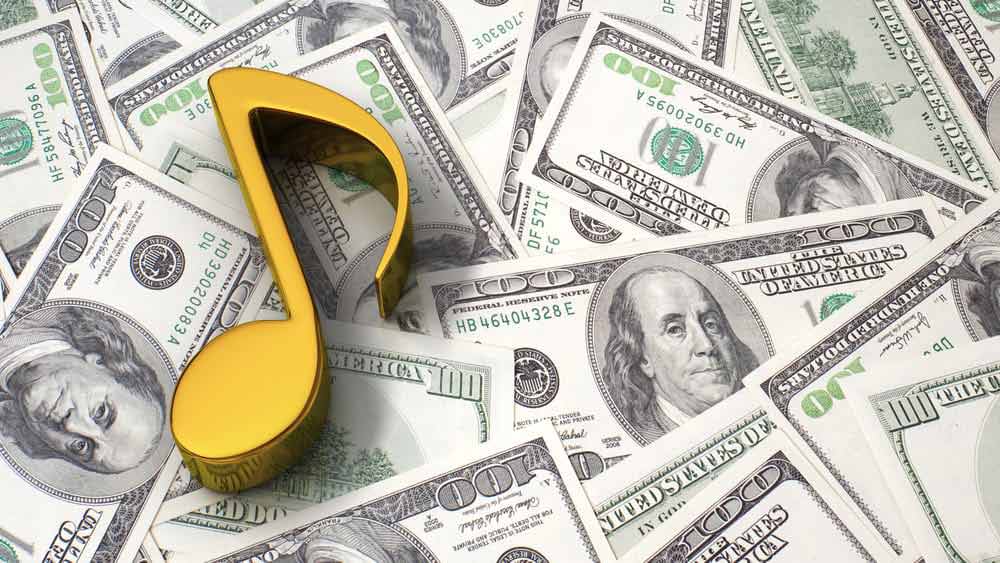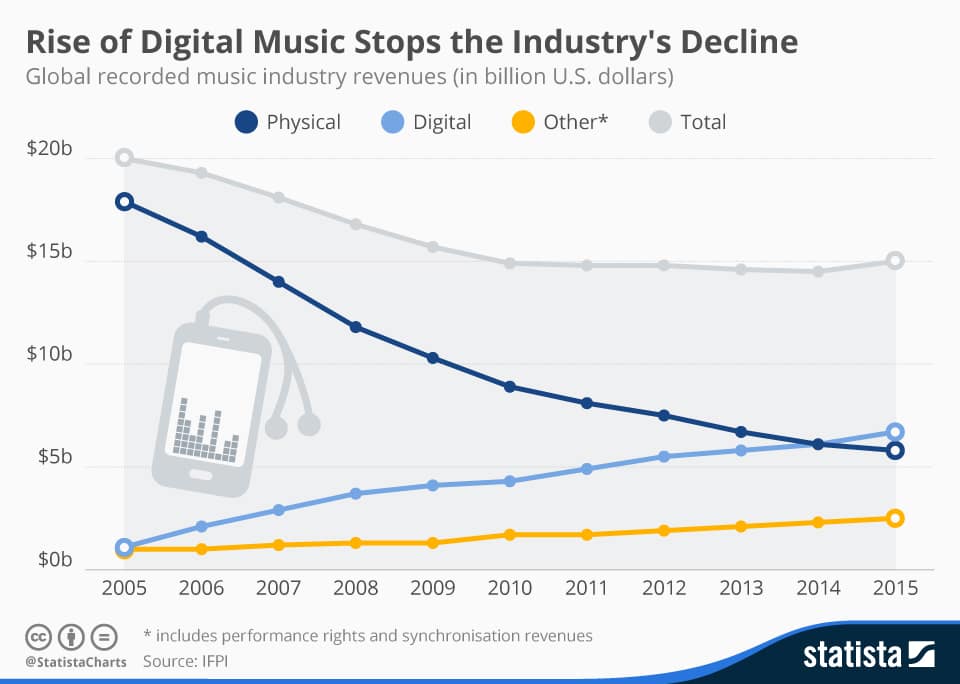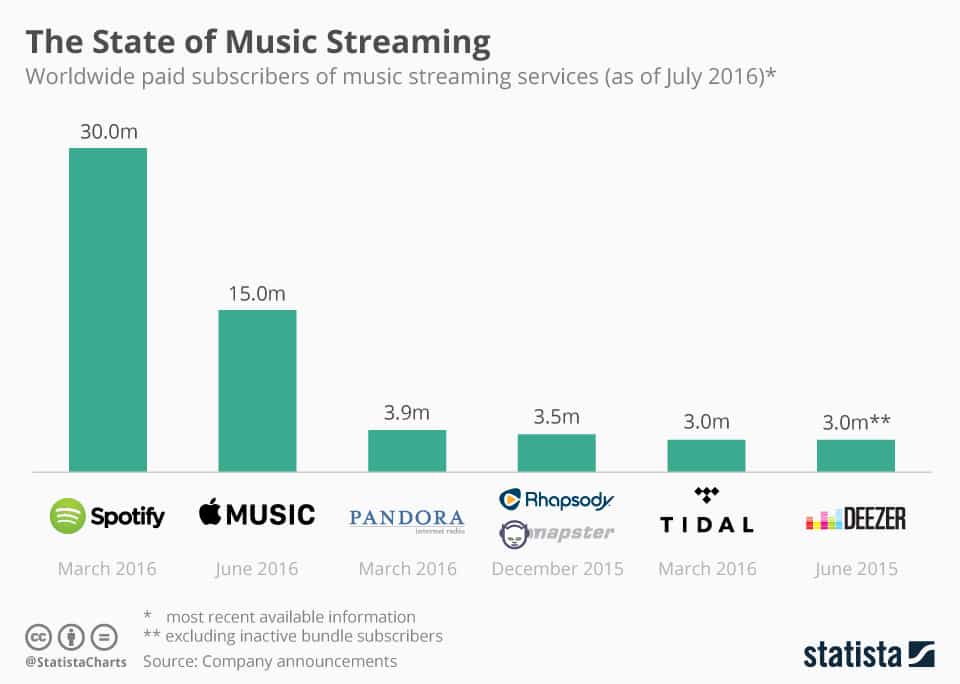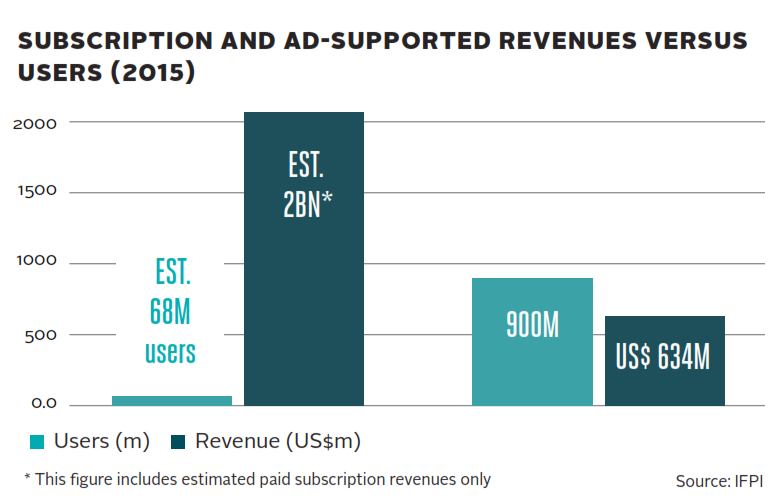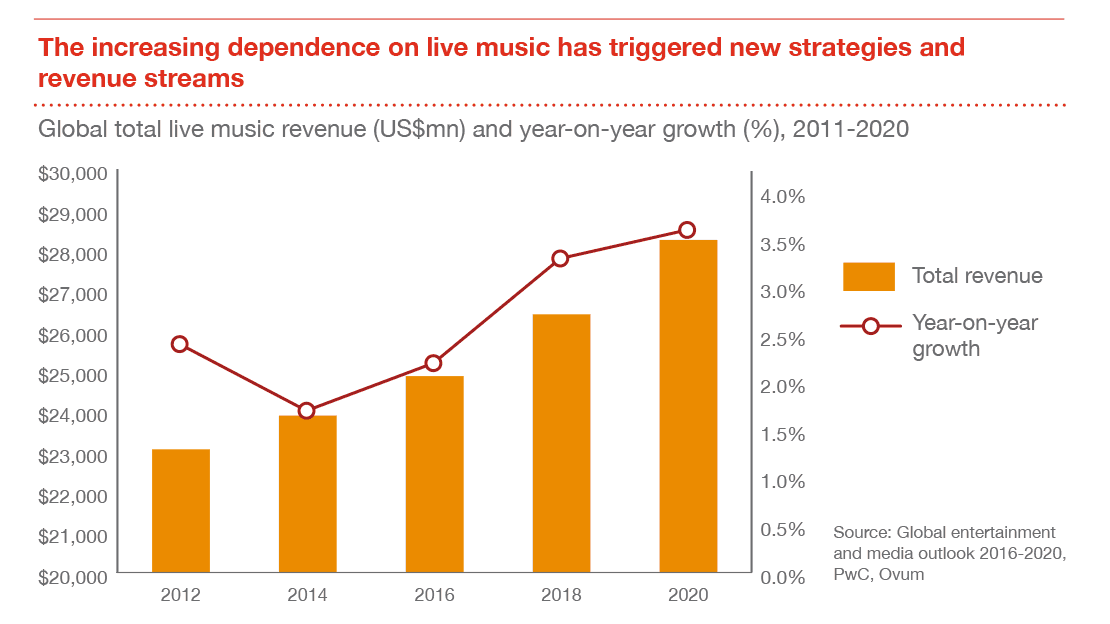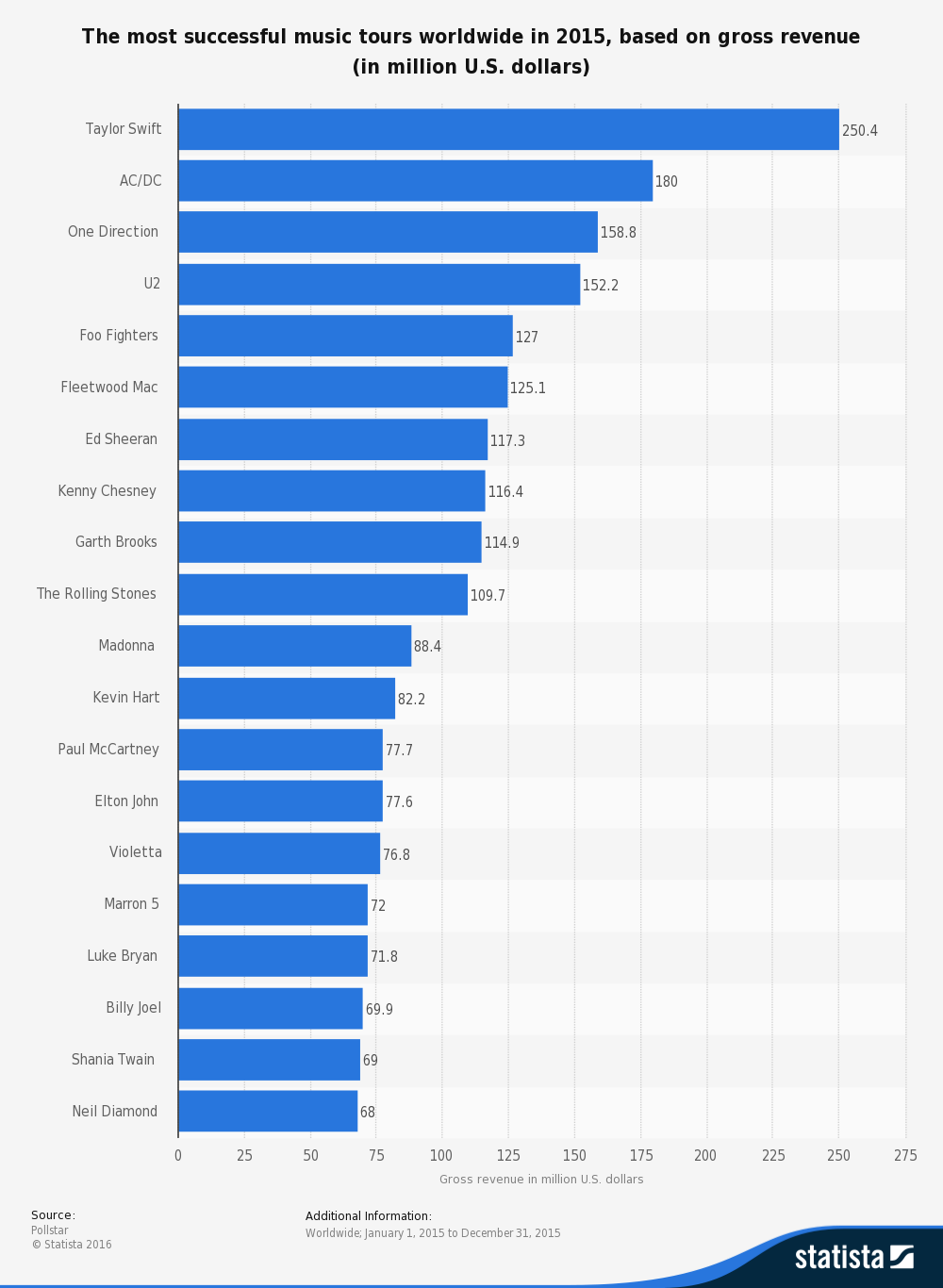So, first things first: where is the money coming from now?
It’s important to understand a few of the most recent changes to the business:
- As of 2015 digital music accounted for nearly half of all global revenue for the music industry, finally lapping physical revenue (from CDs, vinyl, etc.). Notably, streaming in particular is on the rise, now making up 43% of digital revenue, nearly neck-and-neck with downloads at 45%. More people than ever are opting to stream music on their computers, tablets, and smartphones rather than own it in any alternative format.
- To that point, streaming is now the fastest growing portion of the market, jumping from just 8 million users in 2010 to 68 million in 2015.
- Somewhat ironically within the physical market, vinyl – one of the more antiquated forms of recorded music – has seen a huge resurgence in past years. However, the overall effect of this niche market on revenue is negligible – a meager 2% of industry revenues can be attributed to vinyl sales.
- In addition to digital and physical revenue streams, income from broadcast, online radio, and live performances – collectively called Performance Rights – make up about 14% of the industry’s overall revenue. And a small but meaningful segment of industry profits is generated by synchronization income, meaning the use of music in TV ads, films, and brand partnerships.
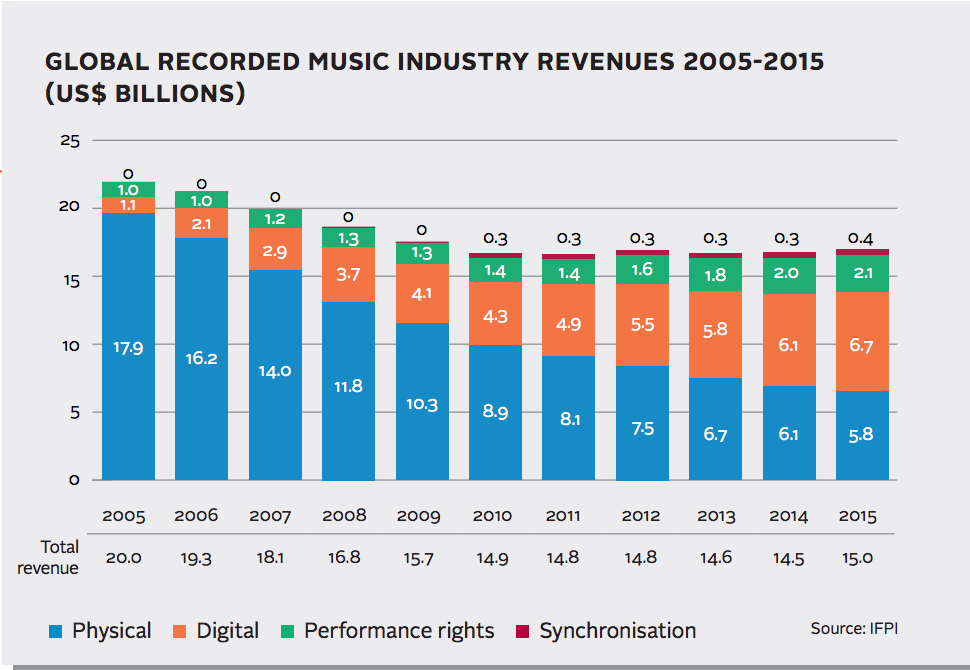
If things progress in the same manner that they have for the last 10 years, we are poised to see digital, especially streaming, dramatically eclipse physical revenues, while performance rights and synchronization income will grow slowly but steadily.
